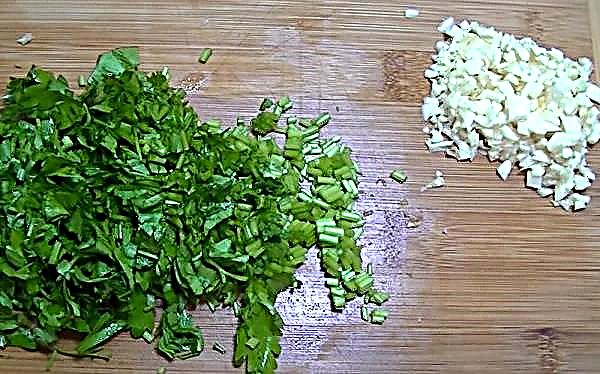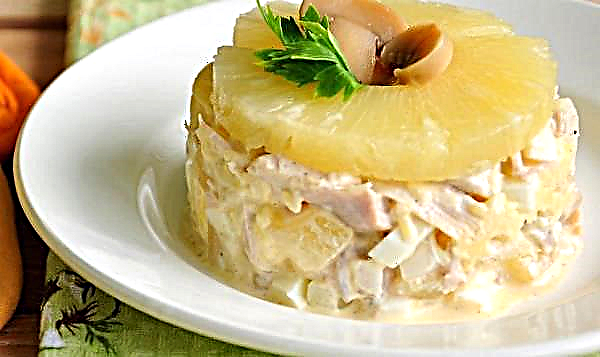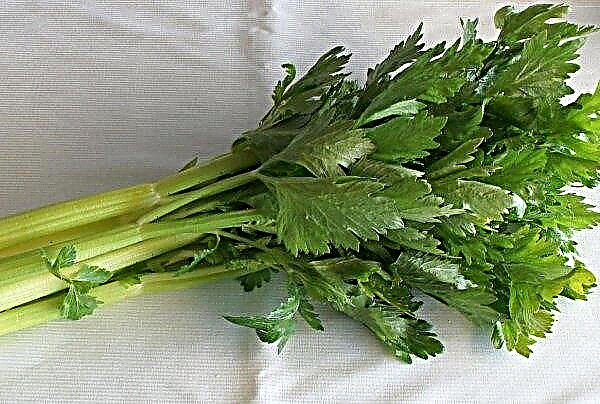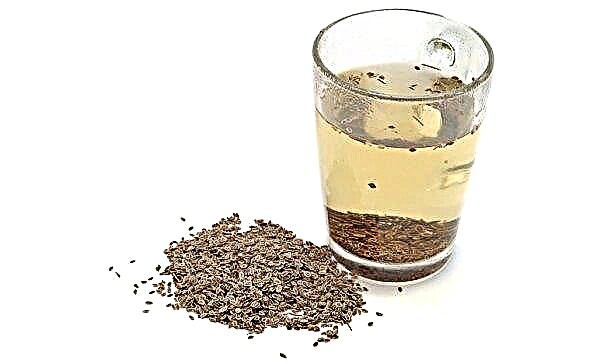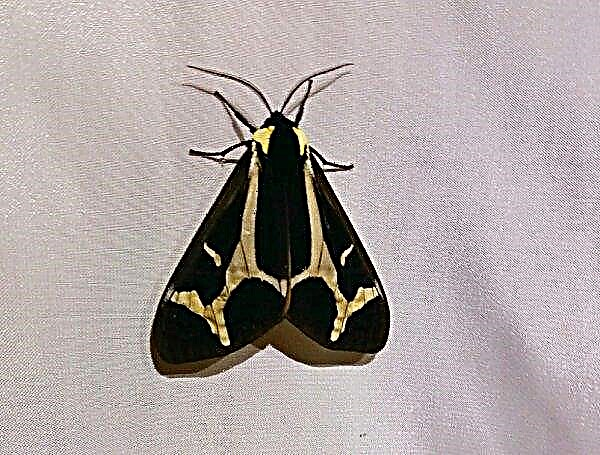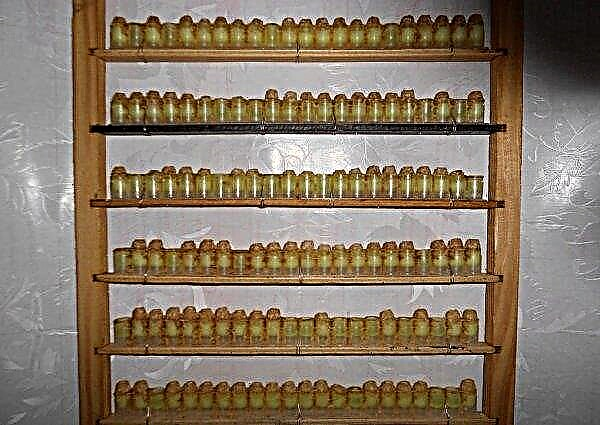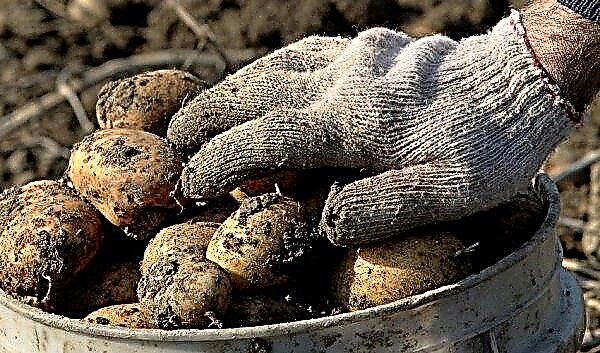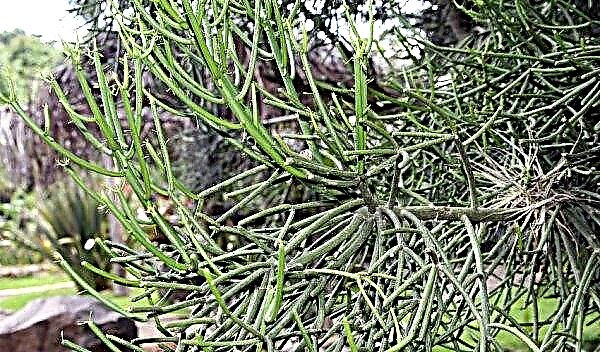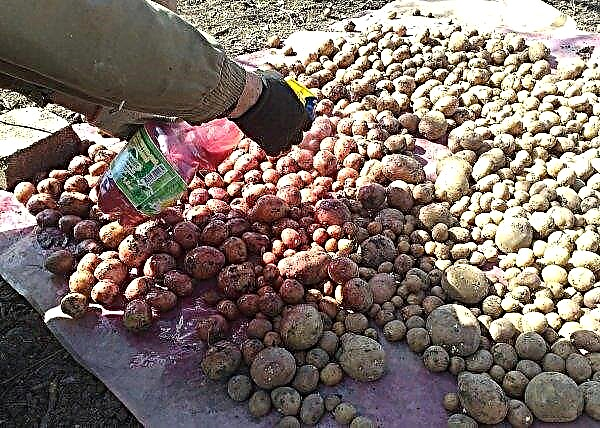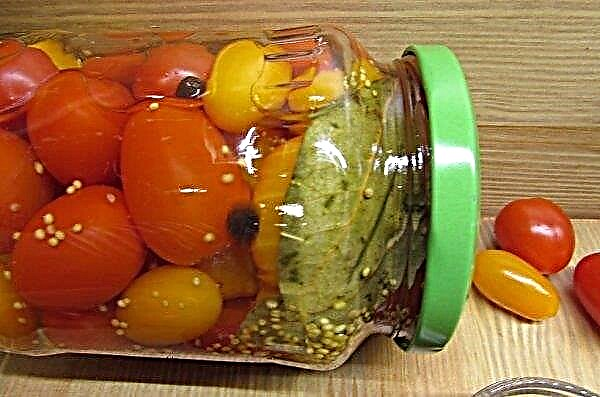No matter how well-groomed and attractive the lawn may be, no matter how correctly the composition in the flower bed is made up, without a clear distinction of the boundaries of these elements, the infield looks untidy and incomplete. Well-designed borders give the garden a neat and tidy look and indicate a high class garden design.
Why separate the lawn from the flowerbed
Making garden compositions from flowers, a lawn covering, bushes many do not think of ways of differentiation of all these elements among themselves. Over time, the plants grow, and the struggle for territory begins. Plants from the flower garden appear on the lawn, and the flower bed dies under the pressure of cereal grasses.
For the safe coexistence of a lawn and a flower bed, you must:
- clear separation of plant materials used to cover the soil;
- the correct distinction between the levels and joints of the flower garden and lawn;
- separation of zones covered with gravel, pebbles, bark or any other material from the seats.
Having paid due attention to arranging the lawn and flower beds, in the future you can get a highly aesthetic, eye-pleasing effect, as well as rid yourself of possible problems with spontaneous movement of plants.
Ideas for protecting the lawn from the flower garden
In order for the lawn to have clear boundaries, and the flower garden to look well-groomed, all kinds of fences, fences and borders are widely used in landscape design. Thanks to these elements, the beds and the edge of the lawn have a finished look.
Did you know? If the lower part of the wood fence is wrapped in roofing material before being buried in the ground, then it is possible to achieve maximum protection of the material from rotting. Such a fence will have a longer life.
There are many types of fences that differ in shape, material of manufacture, installation method and cost, which can be purchased at construction supermarkets. But there are those that can be built independently, using imagination and without incurring significant costs.
Forged or welded metal fence
The most used are welded structures. For the manufacture of the fence, a rod with a round or square section up to 10 mm thick is used, it is better not to use material less than 6 mm. Having pipe cuts, pieces of fittings and a welding machine, you can make a fence yourself.
The work consists of the following steps:
- Think over the shape or pattern based on the available material.
- Measure and fold the future structure on a plane.
- Using a grinder, cut and fit the parts to size.
- Weld elements in a single design.
- Dig a trench along the entire perimeter of the bed and pour it with concrete.
- From the reinforcement, cut the pins and arrange them throughout the trench at the same distance. It is to these pieces of the protruding reinforcement that the fence will be mounted in the future.
- Weld the prepared fragments of the fence to the pins.
A truly exquisite decoration of the lawn will be a forged fence. Such fences are most often made to order and differ not only in the beauty of the work, but also in high cost.
- Like any other product, a metal fence has some disadvantages:
- in hot weather, the fence heats up and can cause burns on plants;
- openwork forged products are difficult to paint, and their role on the lawn carries a more aesthetic load than a functional one.
- Metal structures have several advantages:
- Long life. Fences are treated with special anti-corrosion compounds, which significantly reduce the influence of natural factors on the material.
- High esthetic characteristics. The ability to carry out custom-made products will make your lawn unique.
- Material reliability. Metal structures are able to withstand large mechanical loads.
- A wide range of. In the market for such products, fences of various shapes, colors and sizes can be found.
- Ease of care. They will not require special hassle, but you can return the fence to a new condition with timely painting.
Concrete structures
Concrete garden fences are widely used to distinguish flower beds, paths and lawns. Making a low fence or border from such a material is a reliable and easy-to-execute method.
There are two options for creating concrete borders:
- using dry concrete;
- production from a crude mixture.
The process of creating a fence of dry material consists of the following steps:
- Mark the curb. This will require a rope and pegs.
- Remove topsoil. The approximate depth of the ditch is 15 cm.
- Fabricate and install formwork and spacers.
- Prepare a mixture of cement and sand.
- Pour the composition into the recess and tamp.
- Align the top of the structure and give the curb a neat appearance.
- Apply a layer of water repellent to protect concrete from moisture, temperature fluctuations and corrosion.
It will take a little longer to make a fence of raw concrete.
The work is carried out in the following order:
- Mark the outline of the curb.
- Dig a ditch 10 cm deep and 20 cm wide.
- Along the entire perimeter, install wooden blocks or pegs, the distance between which should not exceed 45 cm.
- Attach the fiberboard to the bars.
- Pour the prepared recess with mortar and carefully level it.
- After setting the concrete, an acrylic sealant should be applied to the curb.
- It will take at least five days to completely dry the structure.
The modern building materials market represents the widest range of finished products. Products can differ in shape, color, various sizes.
The price of borders can fluctuate: you can choose from the cheapest and lowest quality to very expensive and individually made. Choose a fence depending on the needs, financial capabilities and taste preferences.
- The main advantages of concrete structures are:
- durability;
- resistance to adverse environment, temperature extremes and excessive humidity;
- availability and comparative low cost of raw materials;
- variability of color schemes;
- the ability to work with any wave-like lines;
- ease of installation of finished blocks;
- aesthetic appeal.
 The disadvantages of concrete delimiters include the large weight of the finished blocks. When choosing ready-made concrete borders, one should also focus not only on the price of the goods, but also on its quality characteristics. Many unscrupulous manufacturers use low-grade mixtures in the manufacture, which significantly reduces the life of the products.
The disadvantages of concrete delimiters include the large weight of the finished blocks. When choosing ready-made concrete borders, one should also focus not only on the price of the goods, but also on its quality characteristics. Many unscrupulous manufacturers use low-grade mixtures in the manufacture, which significantly reduces the life of the products.
Wooden fences
Wooden fences are the most commonly used due to their accessibility, environmental friendliness and ease of manufacture.
There are several types of wood fencing:
- mini picket;
- crossbar border;
- roller boilers;
- purchased decorative fences in the form of colored pencils, curly elements, etc.
Everyone can make a miniature fencing fence. To do this, you need trimming boards or lining, as well as trims for transverse carriers.
The fence can be assembled in several steps:
- Measure and cut boards of the desired height.
- Fill the elements onto the transverse support bar.
- Drive the support posts at the same distance around the entire perimeter of the site requiring the fence.
- Fasten the fence to the supports.
 The crossbar fence consists of half of the logs that are tightly fixed to the transverse beam. At the edges of the fence, longer stakes are fixed, with which the structure is driven into the ground. Roller boilers are the same halves of rounded logs fastened with wire and staples, forming a flexible structure. This type of fence is very convenient to enclose flower beds with smooth transitions.
The crossbar fence consists of half of the logs that are tightly fixed to the transverse beam. At the edges of the fence, longer stakes are fixed, with which the structure is driven into the ground. Roller boilers are the same halves of rounded logs fastened with wire and staples, forming a flexible structure. This type of fence is very convenient to enclose flower beds with smooth transitions.
- A wooden fence has a lot of advantages:
- the fence is easy to make yourself;
- wood does not freeze in the cold season, which has a protective effect on the root system of plants growing near plants;
- safe natural material;
- low price even for finished curly elements and sections.
The main disadvantage of wooden fences and borders is their fragility. But, conducting regular antiseptic processing of the material, it is possible to significantly extend the life of the material.
Wicker and Wattle Wattle
Fencing woven from willow twigs or go of a vine looks very beautiful and elegant. The material is best harvested in early spring: the branches at this time are very flexible and obedient to work. The creation of this type of fence is very interesting and exciting.
The process itself takes place in the following sequence:
- Clear rods from bark. The less time has passed since the material was cut, the more malleable it will be in operation.
- Pegs of the necessary height are driven in along the entire perimeter of the flower garden or lawn.. The smaller the distance between the stakes, the stronger the fence will be.
- Weaving must begin on the front sidecircling the pegs with a vine. The essence of weaving is alternation - one branch should lie in front of the peg, and the next one after it. The ends of the vine should be nailed with small nails to the pegs.
- Each row must be tapped to the previous hammer, to seal the weave.
- The main advantages of this type of fence are:
- environmental friendliness of the material;
- ease in work;
- minimum cash investments;
- weaving harmoniously looks on any background;
- the ability to work with smooth turns and transitions.
Like any other natural material, the vine and rods are short-lived, which is the main disadvantage of wattle fence.
Tires
Old tires are a good material for distinguishing between lawn and flower plantations. Tire borders painted in various colors look bright and original.
Everyone can make such a fence - just follow the following instructions:
- Cut the tire into equal parts and straighten.
- Separate the solid and cord from the product.
- Put prepared elements around the perimeter of the flowerbed.
- Connect the pieces together with metal clips.
- Make a small depression in the ground, put a curb and dig it.
- Tamp the ground carefully.
Old tires can also be used as single flower beds. In large sections of the tire, half-dug in, can serve as a line of demarcation of lawn and decorative plantings.
- The advantages of such material include the following aspects:
- low cost of material;
- the possibility of coloring in any color;
- ease of use;
- tolerates temperature changes well;
- durability.
The main disadvantage of the material is the release of harmful substances during the decomposition of rubber. But this process lasts for a hundred years, so the proportion of harm is minuscule.
How to protect a flower bed from a lawn
A beautiful, even, well-groomed lawn and a bright flower bed without a single weed can coexist peacefully without intervention for a very short time. With insufficient care, at some point on the lawn you can see blooming daisies or buttercups, and in the flower garden - ears of cereals. If the situation is released, then soon these two elements of the landscape composition will merge together, and the expected effect will not be from the lawn or from the flowerbed. There are several ways to successfully distinguish between a flower bed and a lawn.
Raising a flower bed
This type of small architectural form is considered an element of landscape design, raised above the ground at a distance of at least 15 cm.
- The main functions of such a flower garden are:
- differentiation of borders of a lawn and flower composition;
- does not allow erosion of the soil;
- prevents the spread of cereal grass outside the lawn;
- creating bright color accents in the garden;
- aesthetic filling of the landscape;
- saving space by creating multi-level structures.
In order to raise the level of the flowerbed, additional materials will be required. For the borders of the flower garden, you can use a border tape, concrete fences, wooden borders, old tires, etc. The easiest way to create a raised flower garden is to use a plastic border for installation.
Installation is performed in the following order:
- Mark the borders of the flowerbed.
- Prepare ditches 15 cm deep (the higher the flower bed is raised, the wider the curb should be).
- Along the entire perimeter, at the same distance, install support pegs corresponding to the height of the flower bed.
- Set the fences with the edge in the recess and pull it well.
- Connect the edges of the tape with staples.
- Fill the ditch and tamp well.
- Fill the bed with soil, spill with water.
After shrinkage of the soil, you can plant plants.
Branch by a border
A fairly common technique for separating the flower garden from the lawn is the use of plastic borders. The variety of shapes and colors allows you to create unique landscape compositions. The plastic border is a durable material made in the form of single parts. Such a fence can not only distinguish the borders of the lawn and flower stands, but also limit the terrace, strengthen the edges of paths, steps, and prevent soil erosion. Depending on the purpose of the fence, borders can be decorative or functional elements that are invisible at first glance.
Such a fence can not only distinguish the borders of the lawn and flower stands, but also limit the terrace, strengthen the edges of paths, steps, and prevent soil erosion. Depending on the purpose of the fence, borders can be decorative or functional elements that are invisible at first glance.
On sale you can find two types of borders made of plastic:
- sectional, consisting of a set of identical elements with a fixing system;
- ready-made fences, presented in the form of a fragment of the fence (imitating natural materials).
Installation of sectional borders is very simple: each element has pointed pins at its base, which enter the ground well when pressed. Finished fences in the form of boards, curbs or tiles have special holes in which pegs are driven in, thereby fixing the base on the ground.
The panels are fastened together using special locks or guides. Plastic fences occupy a leading position in the market for such products.
- The main advantages of the material are:
- Long operating time.
- Possibility of easy dismantling and reuse.
- Low cost and minimum materials required for installation.
- Decent appearance.
- Wide range.
- Multifunctionality of borders.
- Easy to install.
- High performance and resistance to natural factors.
Border tape
Garden tapes are widely used in summer cottages.
They can be applied:
- in arranging the borders of flower beds and lawns;
- in the design of the area around the trees;
- when raising the level of flower beds;
- to mark and fix track boundaries.
The most used type of border tape is plastic. This material has a lot of excellent qualities that make it indispensable in the arrangement of a personal plot.
- Its advantages include:
- Ease of use. The border is very simple to install, and if necessary, you can dismantle and reuse.
- A variety of colors and textures. On sale you can see products in 15 colors with imitation wood and other relief patterns.
- Possibility of using unusual shapes and bends on the flower beds. The material has flexibility, fits well during work.
- The border tape is not subject to damage, corrosion under the influence of weather conditions.
- The product withstands mechanical stress and is not subject to deformation.
- Low cost of average quality curbs.
- It has a low weight, which simplifies installation and transportation.
- Long term of operation.
- Significant disadvantages of the separation product:
- some types of borders are made on the basis of plastic, which does not tolerate the effects of low temperatures;
- not suitable for high flower beds, the arrangement of which the thin walls of the tape can stretch and deform;
- high-quality border tape will be expensive.
Important! In order for the plastic border to be softer and more pliable in operation, it is necessary to decompose it under direct sunlight and allow it to warm up well.
In order to protect the flowerbed from the lawn with a tape, you need to perform installation in the specified order:
- Dig a trench. The depth of the moat will depend on the width of the material - the wider it is, the deeper you need to dig it in.
- Lay the tape in the ditchwith the edge down.
- Sprinkle material with soil and tamp well.

Plastic Bottle Guard
One of the most economical ways to distinguish between lawn and flower stands is to create a border from plastic bottles.
- The fence made of plastic containers has a lot of positive characteristics:
- Durability. The decay time of the material is 100 years, it is not susceptible to decay, damage by fungus, mold and insects.
- Resistant to adverse effects natural factors. It tolerates temperature extremes, does not deform under their influence.
- Easy to maintain and repair. With mechanical damage, the fence elements can be replaced.
- Easy installation. The installation process does not require special skills, allows you to apply imagination.
- It is good to use material when building a border complex wavy lines and any angles.
- Availability and low cost elements for the border.
- Bottle Border Separator creates a clear line of demarcationthrough which it is not easy to get into creeping weeds and perennials.
- Originality and originality.
There are two ways to mount the railing with plastic bottles:
The process of vertically mounting a fence for a flower bed consists of the following steps:
- Detach bottles from stickers, wash and dry.
- Fill the container with sand or earth.
- Dig a small ditch with a shovel. The depth should be about 10 cm, and the width should correspond to the thickness of the bottle.
- Set the elements one by one, pressing them together as much as possible.
- Paint the fence as desired.
Horizontal laying of the material is suitable for creating tall flower beds, requires some investment and materials.
Did you know? Bottles made of light and transparent plastic can be painted from the inside by pouring a little paint into them and shaking well. So the paint will be protected from the effects of atmospheric precipitation, and the fence will retain its brightness for a long time.
In addition to the main material, you will need:
- a base (car tire or a cut barrel) around which a flower bed will be collected;
- cement mortar.
The flower bed is created before laying the lawn in the following order:
- Remove labels, wash and dry the bottles.
- Knead a solution of two parts of cement and one part of sand.
- Apply a solution layer of at least 10 cm to the base.
- Gently place the bottles around the tire, immersing the neck in the solution.
- Spread the second and subsequent layers in a checkerboard pattern.
- After the solution has solidified, fill the flower bed with earth.
- Close the bottlenecks of the last row with cones, needles, bark or other decorative materials.

Hedgerow Options
To draw borders of a lawn or paths, it is possible to use not only borders and fences. For these purposes, professionals are increasingly resorting to the creation of hedges, which harmoniously fit into any landscape of the site. Equipped low curbs up to 1 meter high clearly define the outlines of lawns, walkways and flower beds.
Depending on the plants used, hedges can be:
- coniferous;
- deciduous;
- curly;
- curbs.
Fences can also be unshaped, which are not trimmed, and molded - requiring regular trimming to support the shape. Living borders from undersized decorative-deciduous shrubs that do not exceed 45 cm in height look very elegant.
The width of such a living border is about 50 cm. When planting plants, the overall composition should be considered. The hedge should not only enclose individual elements, but also harmoniously combine with the general concept of the garden and maintain a given style of floral arrangement.
The most suitable plants for creating a living border are:
- thyme;
- sage;
- lavender;
- cuff;
- marigold:
- saffron;
- daisy;
- kohiya.
 Of the decorative-deciduous undersized shrubs, boxwood, barberry, honeysuckle, cinquefoil, cotoneaster should be noted. Fences made of border roses and rhododendrons look very elegant.
Of the decorative-deciduous undersized shrubs, boxwood, barberry, honeysuckle, cinquefoil, cotoneaster should be noted. Fences made of border roses and rhododendrons look very elegant.
Fighting flowers on the lawn
One of the care problems faced by lawn owners is the appearance of flowers on the lawn, causing a lot of trouble and irreversible effects. Most of the troubles are delivered by annual plants, the seeds of which, after flowering, are carried by the wind.
Important! Chemical treatment of weeds in flowerbeds and lawns cannot be done in windy conditions.
There are two ways to deal with flowers on the lawn:
- mechanical;
- chemical.
The first method means removing the plants by hand or using a garden fork. Here you should be careful and completely remove not only the ground part, but also the entire root system of the plant. Chemical control agents are represented by herbicides that have a targeted effect on unwanted plants. After such treatments, you should pay attention to the lawn: sow grass in the place of the weed, and then apply a layer of fertile soil and compact.
Weeding flower beds from weed grass
The main enemy of any flower garden are weeds. For a long-standing flowerbed, the appearance of uninvited guests with powerful rhizomes can lead to disastrous consequences in the form of the death of a flower garden. Weeding and timely removal of weeds are the only condition for the successful growth of ornamental plants. Weeding is a necessary process, which is an almost constant way of care.
Weeds not only take light, moisture, nutrients from ornamental plants, they are also nurseries of pests and diseases. No effort is required to deal with annual weeds.. It is enough to cut the weed and remove it from the flower bed. The timeliness of such weeding is very important - you need to try to prevent the ripening and scattering of seeds. It is much more difficult to deal with perennials. If you run the situation, you can completely ruin the flower garden.
Important! It is not recommended to use a shovel: you can cut the weed into several parts, thereby only exacerbating the problem.
The roots of weeds are able to grow into the root system of a perennial, and then the unwanted plant can no longer be removed. The only way out is a complete transplant of the flower garden. When weeding flower beds from weeds such as coltsfoot, wheat grass and dandelion, you should be extremely careful and completely remove the roots from the soil. Even a small fragment of the root system of the weed is able to give life to a new plant.
For weeding you need to use:
- a hoe;
- pitchfork;
- root eliminator.
 Weeding should be done on slightly moistened soil. Too dry soil will cause root tears, and waterlogged soil will make it possible to re-root remote plants. Fencing for flower beds and lawns is an important detail in the landscape design of the site. It not only performs decorative functions, giving the flower beds a finished, well-groomed appearance, but also creates a harmonious, single landscape composition.
Weeding should be done on slightly moistened soil. Too dry soil will cause root tears, and waterlogged soil will make it possible to re-root remote plants. Fencing for flower beds and lawns is an important detail in the landscape design of the site. It not only performs decorative functions, giving the flower beds a finished, well-groomed appearance, but also creates a harmonious, single landscape composition.

